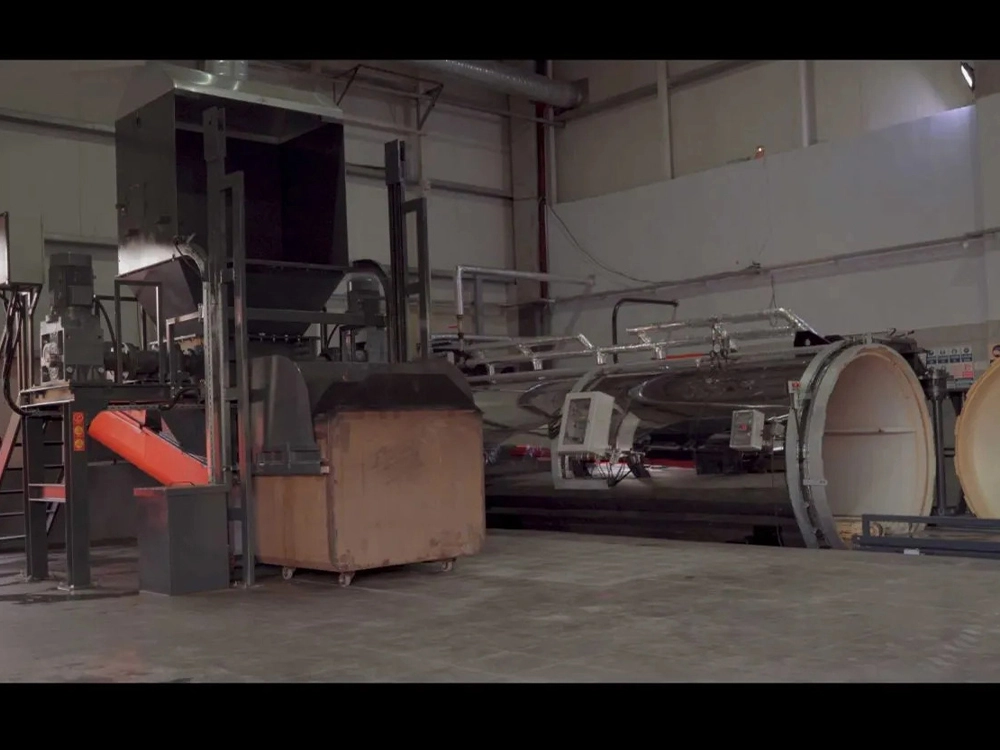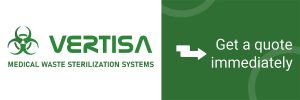In the realm of healthcare management, the implementation of cutting-edge medical waste sterilization systems plays a pivotal role in ensuring the safety of both patients and healthcare workers. This article delves into the realm of medical waste sterilization systems, exploring their significance, benefits, and implications for a sustainable healthcare ecosystem. Throughout the article, the focal keyword “medical waste sterilization systems” will be strategically integrated five times to enhance SEO optimization.
Medical waste, a byproduct of healthcare activities, presents significant challenges due to its potential to carry infectious agents and harmful materials. Proper management of medical waste is not only critical for preventing disease transmission but also for minimizing environmental impact. This is where medical waste sterilization systems come into play as an essential component of comprehensive waste management.
Evolution of Medical Waste Sterilization Systems
The progression of medical waste sterilization systems has revolutionized the way healthcare facilities approach waste management. Historically, medical waste was often incinerated or treated with chemical disinfectants, but these methods posed risks to air quality and water sources. The advent of modern sterilization systems marked a turning point, offering safer and more efficient alternatives.
Autoclaves, which use steam to sterilize waste, were among the earliest innovations. As technology advanced, so did sterilization methods. Chemical processes utilizing hydrogen peroxide and ozone gained prominence for their efficacy and reduced environmental impact. The evolution continues, with microwave and plasma-based systems emerging as cutting-edge options.
Key Components and Technologies in Modern Systems
Modern medical waste sterilization systems incorporate an array of advanced technologies. Steam autoclaves remain a cornerstone, utilizing high-pressure steam to eliminate pathogens effectively. Chemical sterilization, often employing hydrogen peroxide vapor, ensures thorough disinfection. Microwave systems exploit electromagnetic waves for targeted heating, while plasma-based techniques use ionized gases to destroy microorganisms.
Each technology has its unique strengths. Steam autoclaves offer versatility and broad applicability. Chemical methods provide excellent material compatibility, while microwave systems reduce processing times. Plasma-based systems excel in sterilizing heat-sensitive items. The integration of these technologies into comprehensive systems allows healthcare facilities to tailor their approach based on waste characteristics and facility requirements.
Advantages and Challenges of Advanced Sterilization Systems
Innovative medical waste sterilization systems offer numerous advantages. They achieve higher microbial kill rates compared to traditional methods, reducing the risk of disease transmission. These systems are eco-friendly, emitting fewer pollutants and greenhouse gases. Additionally, they minimize the need for landfill disposal, promoting sustainability.
However, adopting advanced sterilization systems is not without challenges. Initial costs, including equipment procurement and staff training, can be substantial. Maintenance and operational complexities require specialized expertise. Furthermore, regulatory compliance is essential to ensure proper system utilization and waste disposal.
Despite these challenges, the long-term benefits outweigh the initial hurdles. Enhanced pathogen eradication, reduced environmental impact, and improved operational efficiency contribute to a safer and more sustainable healthcare environment.
Regulatory Compliance and Safety Standards
Ensuring regulatory compliance and adherence to stringent safety standards is paramount in medical waste management. This subsection navigates through the regulatory landscape governing medical waste sterilization systems, emphasizing the importance of aligning practices with local, national, and international guidelines to guarantee both safety and legality.
Medical waste is subject to specific regulations due to its potential to harm human health and the environment. Regulatory bodies, such as the Environmental Protection Agency (EPA) in the United States and equivalent agencies worldwide, outline guidelines for the treatment, handling, and disposal of medical waste.
Medical waste sterilization systems must adhere to these regulations to ensure that waste is rendered non-infectious before disposal. Compliance encompasses proper waste classification, accurate labeling, appropriate packaging, and secure transportation. Failure to meet these requirements can result in legal consequences, environmental contamination, and compromised healthcare safety.
A vital aspect of compliance is personnel training. Healthcare professionals responsible for waste management must be educated about the correct usage of sterilization systems, personal protective equipment (PPE), and waste handling procedures. Training ensures that medical waste is processed and managed in a manner that protects the well-being of individuals and the environment.
To maintain compliance, healthcare facilities must stay informed about evolving regulations and best practices. Regular audits and assessments help identify areas of improvement and enable adjustments to waste management protocols. By aligning with regulatory standards, medical waste sterilization systems contribute to a culture of accountability and responsible healthcare waste management.
Future Prospects and Sustainability
The future of medical waste sterilization systems is marked by continuous innovation and a heightened focus on sustainability. This portion contemplates the potential advancements on the horizon, including the integration of artificial intelligence, robotics, and further eco-friendly sterilization methods. By embracing sustainable practices, healthcare facilities can contribute to a greener planet while upholding the highest standards of safety.
Artificial intelligence (AI) holds promise in optimizing sterilization processes. AI-driven systems can analyze data, monitor sterilization cycles, and make real-time adjustments for optimal performance. Robotics may be employed for waste sorting, handling, and loading into sterilization chambers, reducing human exposure to potentially hazardous materials.
In line with the global shift toward sustainability, eco-friendly sterilization methods are gaining traction. Supercritical water oxidation, a process that uses high temperature and pressure to break down waste, holds potential for complete waste destruction with minimal environmental impact. Photocatalytic oxidation, utilizing light-activated catalysts to degrade waste, is another eco-friendly option under exploration.
The convergence of innovation and sustainability in medical waste sterilization systems reflects a commitment to responsible resource utilization. As these advancements become more accessible, healthcare facilities can align their waste management practices with broader environmental goals.
A Holistic Approach to Healthcare Sustainability
Innovative medical waste sterilization systems serve as a microcosm of a larger pursuit: healthcare sustainability. The conscientious integration of these systems aligns with a broader commitment to environmental stewardship, resource efficiency, and ethical healthcare practices.
Beyond the realm of waste management, healthcare sustainability encompasses energy-efficient facility designs, reduced water consumption, responsible procurement of medical supplies, and community engagement. These initiatives collectively contribute to a healthcare landscape that minimizes its carbon footprint and maximizes positive societal impact.
Efforts in healthcare sustainability extend to patient care as well. The reduction of single-use plastics, implementation of digital health records, and promotion of preventive care contribute to a healthier population and reduced strain on resources.
In this context, innovative medical waste sterilization systems take on a pivotal role. They symbolize the capacity of the healthcare sector to innovate and evolve in ways that prioritize both human well-being and the well-being of the planet.
The Road Ahead: Challenges and Opportunities
As healthcare continues to advance, so do the challenges and opportunities in medical waste sterilization. Rapid technological evolution demands ongoing training for healthcare professionals to ensure the proper operation of advanced systems. Overcoming financial constraints and navigating regulatory landscapes requires strategic planning and collaboration.
Moreover, the global nature of healthcare necessitates a universal approach to medical waste sterilization. Collaborative efforts between developed and developing regions can bridge gaps in waste management practices and share technological expertise.
In conclusion, innovative medical waste sterilization systems epitomize the synergy between technology, safety, and environmental stewardship. They embody the commitment of the healthcare industry to continuous improvement, upholding the highest standards of care while minimizing its ecological footprint.
By harnessing the power of advanced technologies, healthcare facilities can drive positive change that resonates far beyond their walls. The legacy of responsible medical waste sterilization will shape the future of healthcare by safeguarding communities, conserving resources, and paving the way for a healthier planet. In a world where innovation defines progress, these systems stand as a testament to the potential of human ingenuity in the service of both humanity and the environment.
In Conclusion
In conclusion, innovative medical waste sterilization systems represent a transformative force in healthcare waste management. The evolution from traditional methods to cutting-edge technologies underscores the industry’s dedication to safety, efficiency, and sustainability.
The integration of key technologies, such as steam autoclaves, chemical disinfection, microwaves, and plasma-based systems, enables healthcare facilities to customize their sterilization approach. While challenges like initial costs and regulatory compliance exist, the advantages of enhanced pathogen eradication and reduced environmental impact make advanced systems a prudent investment.
Adherence to regulatory standards ensures the safe and legal handling of medical waste. Regulatory bodies establish guidelines for waste classification, labeling, packaging, and transportation. By staying compliant, healthcare facilities uphold ethical responsibilities and safeguard public health.
Looking ahead, the future of medical waste sterilization systems is promising. The incorporation of AI and robotics streamlines processes, while eco-friendly methods contribute to sustainability efforts. By embracing these advancements, healthcare facilities position themselves at the forefront of responsible waste management.
In embracing innovative medical waste sterilization systems, healthcare stakeholders demonstrate their commitment to fostering a safer, healthier future. The marriage of technological progress and environmental stewardship in these systems resonates with the broader objectives of sustainable healthcare and responsible resource management. As the healthcare landscape continues to evolve, the responsible management of medical waste remains a steadfast commitment, ensuring that our progress is marked not only by medical advancements but also by the responsible stewardship of resources and the preservation of a healthier world for generations to come.
In conclusion, innovative medical waste sterilization systems represent a transformative force in healthcare waste management. The evolution from traditional methods to cutting-edge technologies underscores the industry’s dedication to safety, efficiency, and sustainability.
The integration of key technologies, such as steam autoclaves, chemical disinfection, microwaves, and plasma-based systems, enables healthcare facilities to customize their sterilization approach. While challenges like initial costs and regulatory compliance exist, the advantages of enhanced pathogen eradication and reduced environmental impact make advanced systems a prudent investment.
Adherence to regulatory standards ensures the safe and legal handling of medical waste. Regulatory bodies establish guidelines for waste classification, labeling, packaging, and transportation. By staying compliant, healthcare facilities uphold ethical responsibilities and safeguard public health.
Looking ahead, the future of medical waste sterilization systems is promising. The incorporation of AI and robotics streamlines processes, while eco-friendly methods contribute to sustainability efforts. By embracing these advancements, healthcare facilities position themselves at the forefront of responsible waste management.


